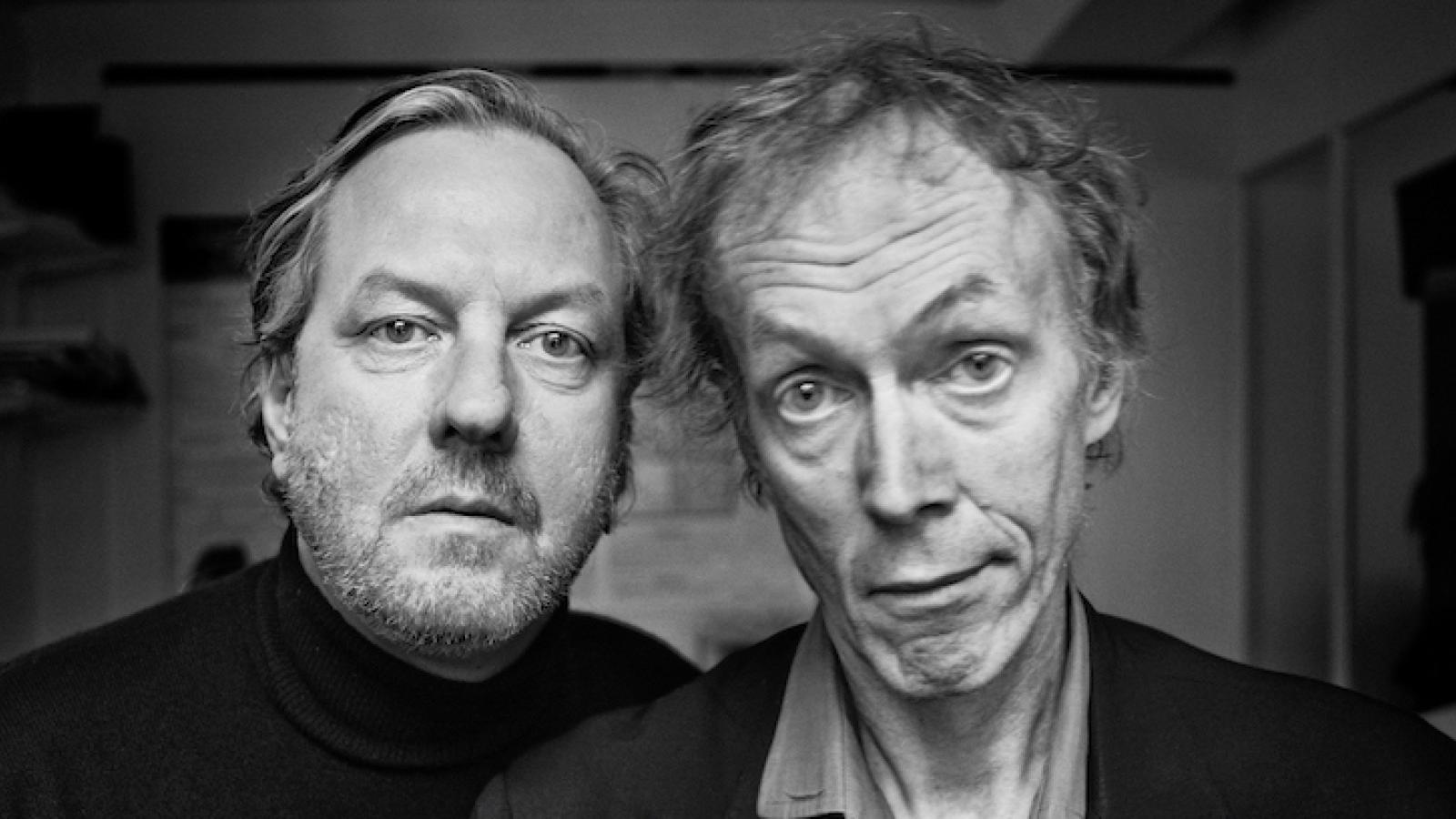In this feature piece, PhD student Emma Bunting (UK DRI at UCL) explores journalist Charles Sabine's experiences with Huntington's disease, his advocacy work, and the value of interaction between researchers and people with lived experience of neurodegenerative diseases.
At a meeting of the UK DRI’s DNA Repair Research Theme earlier this year, Charles Sabine, former war-zone correspondent for NBC, took the floor to share his personal story and the remarkable progress achieved in understanding and combatting Huntington's disease (HD). With impressive determination, Charles embarked on a mission to challenge the stigma and prejudice surrounding HD, shedding light on its truth and paving the way for a brighter future.
From Darkness to Light
Charles was initially confronted with the harsh reality of HD in 1994 following his father’s diagnosis, along with the realisation that he too had a 50% chance of inheriting the same fate. He recounted the lack of standards of care during his father's illness, describing stories of people with HD being confined to padded cells and fed through hatches. The absence of hope and the stigma surrounding HD weighed heavily on families like his, causing shame, suffering, misdiagnosis, and misunderstanding.
Charles later discovered that he also carried the HD gene, with a neurologist informing him there was nothing he could do except live his life as well as possible. However, Charles staunchly rejected this passive outlook and embarked on a courageous shift, transitioning from war zones to what he describes as a far more challenging battleground: fighting against the prejudice and stigma surrounding HD.
By connecting with the experience of patients and their families, I would imagine that researchers gain an understanding of their daily challenges, fostering motivation and a sense of purposeCharles Sabine
“I thought, I’m going to do the opposite of what my father did, which was totally hide this disease – even from his own family – for virtually his whole life,” he recalled. “And what he did was not unique by any means”.
Charles came up with an impactful catchphrase, HiDden No More, which not only became the rallying slogan for the advocacy events he organised but also serves as his foundation's name today. Their advocacy work includes the event featured by the documentary “Dancing at the Vatican”, when they organised for the Pope to meet and bless 300 individuals living with HD. This event was broadcasted globally, with the Pope declaring in three languages that the time had come for the world to acknowledge that Huntington's disease must be hidden no more.
The Power of Information and Integration
During his talk, Charles highlighted the transformative role of patient groups, which have evolved from sources of emotional support to vital tools for research engagement. He highlighted that this engagement helps to instil hope by showcasing the growing number of individuals and pharmaceutical companies dedicated to developing HD treatments.
I approached Dr Lauren Byrne, who is both from an HD family and the leader of a research group at UCL’s Huntington’s centre, for her perspective on this.
“The more patients understand about the research, the more engaged they’re going to be, which means taking part in more studies. All of that is cumulative and goes towards our shared goal of wanting to cure these diseases,” she said.
Charles also pointed out the value that integration between patient and research communities adds for the scientists.
“By connecting with the experience of patients and their families, I would imagine that researchers gain an understanding of their daily challenges, fostering motivation and a sense of purpose,” he added.
Speaking to researchers who were at his talk, it sounds like Charles achieved exactly that. Jessica Olive, a PhD student in the Tabrizi lab (UK DRI at UCL) told me about the value his talk added to her work.
“We can focus so much on the details and forget the bigger picture, but Charles’ talk was a reminder of what we’re all working towards and why we do what we do” she said.
Personal reflections
From my perspective as an academic researcher, it is clear there is much to be gained from both sides of building researcher-patient relationships. For us, we get perspective on the bigger picture of what we’re working towards, which is both motivating and grounding. It’s a welcome reminder that our work goes far beyond citations and journal impact; it’s about making a real difference to peoples’ lives. For the patients, I hope our interaction helps them to understand how dedicated we are as a research community, and that we are not just “faceless individuals in white coats” as Charles put it so well. We are in this fight together.
Charles and I had a lengthy discussion after his talk, agreeing that collaboration between researchers and the HD community, combined with the continued increased pharmaceutical involvement, will ultimately tackle the disease and the fear surrounding it.
“No generation in the future will have to fear this disease as much as mine has,” he stated. “I have no doubt about it. Completely convinced.”
More resources are also available on the Hidden No More website.
Article published: 22 August 2023
Banner image: Charles and John Sabine by Martin Sølyst. Copyright Hidden No More
